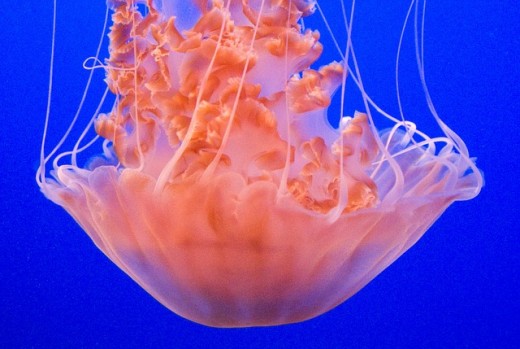ESL Upper-Intermediate Lesson Plan - Uses of Urine
ESL Lesson Plan Contents
- Warm up
- Reading
- Reading comprehension questions
- Discussion questions
- Vocabulary Match
- Group speaking activity
- Teacher's answers
Level: Upper-intermediate and advanced.
Time: 60 minutes
Warm Up
Discuss with a partner the list below. Tick the ones you think are true:
Urine could be used as a...
- A source of electric current.
- Infertility medicine.
- Fertiliser.
- A cure for acne.
- Dyeing clothes.
- Making dynamite.
- Toothpaste.
- Home-made remedies.
ESL Upper-Intermediate Lesson Plan - Uses of Urine

Reading Comprehension
Have you ever contemplated the value of your own pee? With over 7 billion inhabitants on planet earth, we are producing an average of 10.5 billion litres of waste a day. What if we could use our pee to benefit the world instead? In fact, scientists in Bristol university have already proven that that they can power a smart phone using urine. And more and more subsistence organic growers in the US and Europe are turning to human urine as an effective fertiliser. But using pee in our every day lives is not a new concept, let's have a look at how it helped us to progress scientifically and industrially in the past.
Urine and the Fashion Industry
The ancient Romans used to collect urine from public urinals where it was used to remove tough stains from clothes. Dirty clothes would be placed in a vat of pee and mixed with water. A worker would get into the tub and stomp on the clothes to beat the dirt out, much like a modern day washing machine. Business was so good that merchants involved in the collection of urine had to pay a pee tax to Emperor Vespasian. Apparently, when his son complained that it was a disgusting idea, he supposedly retorted “Money doesn't stink”.
Keep Your Whites White and Your Colours Bright
Urine is a rich source of urea. If left to decay, urea becomes ammonia. In the past ammonia was used to soften and tan animal hides. Soaking the skins in urine also helped to remove hair and bits of flesh. Urine was of great importance in the 16th century UK, where clothes were made from mainly wool, flax or silk. The dyes they used to colour the cloth were made from natural ingredients such as berries, flowers, leaves and roots. So they needed a mordant - an agent that binds the colour to the material. Urine was an excellent mordant and many families made and dyed their own clothes with their own urine.
Killer Pee
Gunpowder's main ingredient is potassium nitrate. Before it was mass-produced in factories in the 20th century, people used the naturally occurring nitrogen from pee to make it. According to a DIY gunpowder instruction manual, written by physician and geologist Joseph LeConte, you needed to mix leaves, ash and straw with manure. Every week you would add human and animal waste to the pit. The concoction was stirred regularly and after a few months nitre would appear at the surface as a white salt.
Urine was also used in another unusual wartime situation. During World War 1, soldiers were advised to soak a cloth in pee and cover their noses with it, thereby diminishing the effects of a chlorine gas attack.
Jellyfish Stink

Urotherapy and Home Remedies
Urotherapy is the practice of drinking, massaging or bathing in your own urine. Proponents claim that urine has anti-bacterial, anti-viral and anti-fungal properties. Opponents to this therapy deny there are any benefits to drinking ones own urine and indeed may even cause harm. In spite of its unappealing origins, pee is a popular home remedy in the treatment of athletes foot and acne. Because urine is so sterile, it can even be used to wash out a wound (if you do not trust the local water supply). Some baseball players have even admitted to urinating on their hands as a preventative measure against blisters. Other uses include the treatment of: insect bites, arthritis, diabetes, rabies, tuberculosis, cancers, heart disease, digestive disorders, prostate problems, malaria, asthma, colds, flu, burns, skin disorders...etc.
Only a couple of hundred years ago it had a very useful purpose for clothes – it protected them from insects. Robes were kept near a chamber pot under the bed and the strong smelling ammonia emanating from the pee killed the moths before they destroyed the garments. And last, but not least, urine helped to give our ancestors a gleaming smile. Before the invention of toothpaste, people used it to brighten and whiten up their teeth.
Reading Comprehension Questions
-
What's another word for vat, stink, decay, proponents and properties ?
-
Describe the process of cleaning clothes with urine?
-
What does 'supposedly retorted' mean?
-
Why did they need a mordant in 16th century UK?
-
Name the ingredients in the gunpowder mixture?
-
How did soldiers lesson the effects of chlorine attacks?
-
Can you give examples of when urine might be a better option to treat injuries than water?
-
How did pee protect clothes?
-
Who used pee to prevent blisters?
Discussion Questions
-
Would you be prepared to use your own urine? In which situation would you use your own pee?
-
Which use surprised you the most? Does your partner agree with you?
-
One person's urine can fertilise 1 square meter of soil a day. How would this impact the environment?
-
Urea is an ingredient that can be found in a lot of beauty products. Can you name any?
-
Can you think of any other ways to reuse what we consider waste products?
-
Bear Grylls, host of the T.V. survival show 'Man Vs Wild', once drank his own urine to survive. Do you think if you were in the same circumstances you would do the same?
-
Many members of the medical community consider urotherapy to be a pseudoscience. Do you agree?
-
Advocates of urotherapy say the best time to drink your own wee is the first drink of the morning. Why do you think this is?
-
Madonna revealed that she pees in the shower to cure her athlete's foot. Would you try something like this if your favourite celebrity was doing it?
-
How do you think our ancestors came up with these ideas?
-
Can you name any other home remedies for cleaning clothes, whitening teeth, instruments of death or healing the body?
-
Can you think of any other medicines that have or had strange ingredients?
Vocabulary Match
Diminishing
| A mixture of various ingredients.
|
Moth
| To walk heavily on something.
|
Stomp
| To convert animal skin into leather.
|
Blisters
| To lessen the effect.
|
Concoction
| To place in water.
|
Soak
| Do it yourself.
|
Tan
| Animal dung used for fertilising land
|
Gleaming
| A small bubble on the skin filled with liquid.
|
Chamber pot
| An insect with two pairs of broad wings.
|
DIY
| A bowl kept in a bedroom used as a toilet at night.
|
Manure
| To shine brightly.
|
Group Speaking Activity
Imagine the world as we know it has ended. All manufacturing plants and factories have stopped working, schools closed down, shops were looted and the government is gone. The society we once knew and loved is now a thing of the past.
You and your classmates are living in a compound together. You grow some fruit and vegetables, but you don't have much in the way of clothing, shelter, warmth, hobbies or other things that make our lives easier. What you do have in abundance is a lot of waste products.
-
Discuss with your group what you could make from the waste products below.
-
Give a description of the new product you would make.
-
Then visit the other groups to see if you can barter with them.
- Old tyres
- Plastic bottles
- Broken glass
- Vegetable skins
- Used vegetable oil
- Human or animal faeces
- Ashes
- Plastic wrapping
- Paper and cardboard
- Magazines
- Abandoned cars
Answers to Uses of Urine Lesson Plan
Discussion
Urine can be used in all the cases in the list.
Reading Comprehension Questions
- Tub- container. Stink – smell badly. Decay - rot. Proponents -supporters. Properties -characteristics/qualities.
- The worker would pour water and urine into a container and then jump on the clothes to remove the dirt.
- Allegedly replied, supposedly said, believed to have answered...etc.
- Because the dyes were natural and washed out easily. The mordant binded the colour to the fabric.
- Urine, faeces, ashes, leaves and straw.
- By peeing in their handkerchiefs and covering their noses with it.
- When you cannot trust the water not to infect your skin, it is better to use urine.
- By acting as a moth killer.
- Baseball players.
Vocabulary Match
Diminishing-To lessen the effect.
Moth-A insect with two pairs of broad wings.
Stomp-To walk heavily on something.
Blister-A small bubble on the skin filled with liquid.
Concoction-A mixture of various ingredients.
Soak-To place in water.
Tan-To convert animal skin into leather.
Gleaming-To shine brightly.
Chamber pot-A bowl kept in a bedroom used as a toilet at night.
DIY -Do it yourself.
Manure-Animal dung used for fertilising land.
© 2015 Muttface








